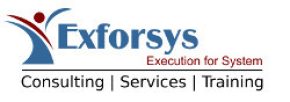Category: Technology Trends
The computer sciences professionals are required to be familiar with and stay abreast of current technology trends. Contemporary technology trends are always changing and new developments are constantly improving in data management, data quality, web service applications and software. One of the premier technology trends of 2007 is ensuring high-quality database management. Information on the latest technology trends can be found in this section as a series of tutorials and online training articles geared toward the Information Technology professional.
Spotting new technologies and obtaining immediate experience and knowledge of newly developed technologies can mean the difference between success and failure of a career in computer sciences. When a developer or programmer uses a new technology and becomes familiar with the most recent technology trends, he will have advantage over his colleagues. Technological innovation is at the forefront of career development in computer sciences.
Current technology trends include Software as a Service (SAAS), a mode of software delivery that provides maintenance, daily operation and software support through Web-based servers and browsers. Other hot trends in technology include Java technology trends, service oriented architecture advancements and the promise and foundation within Microsoft Window’s .NET framework for web services.
